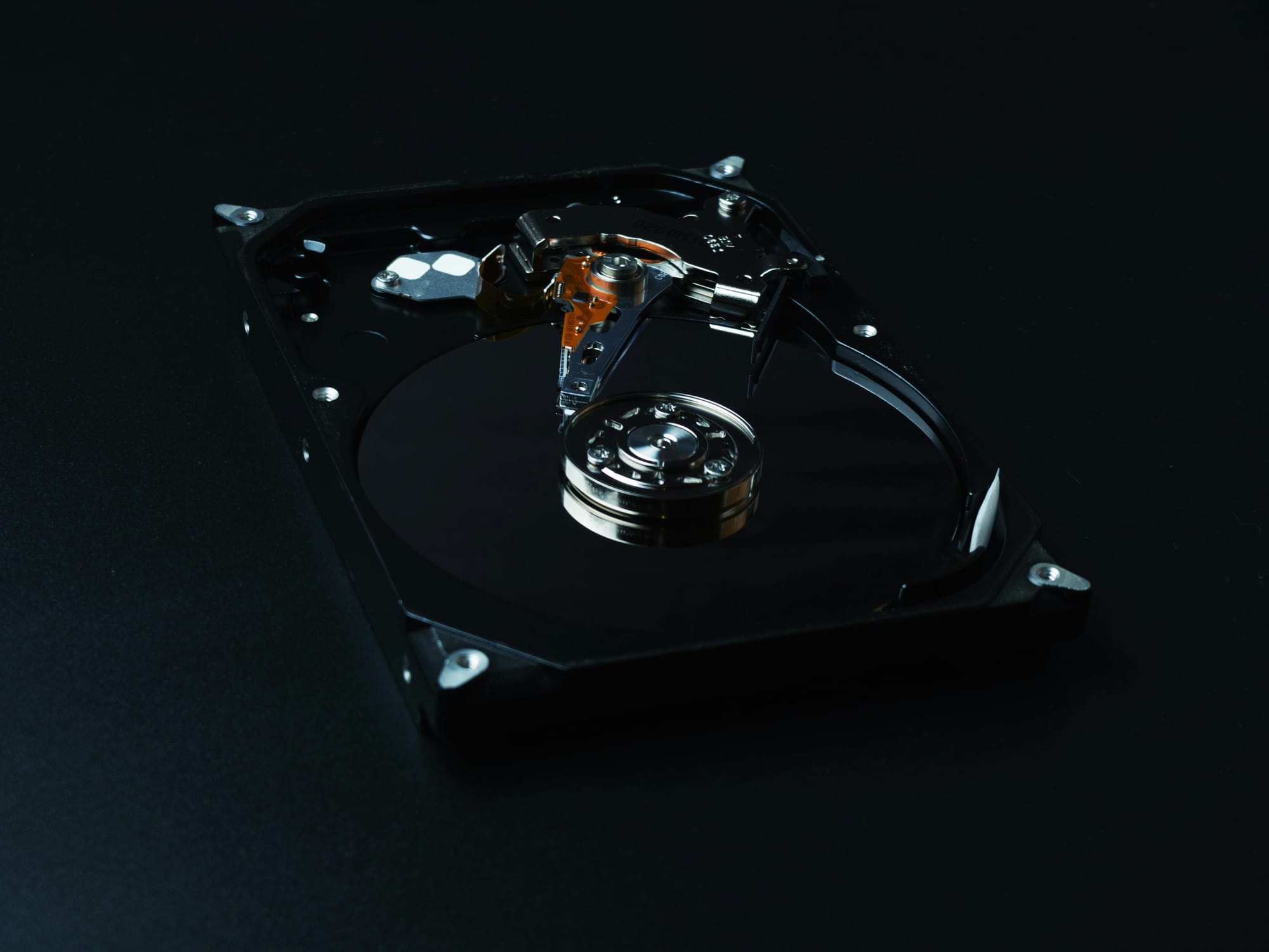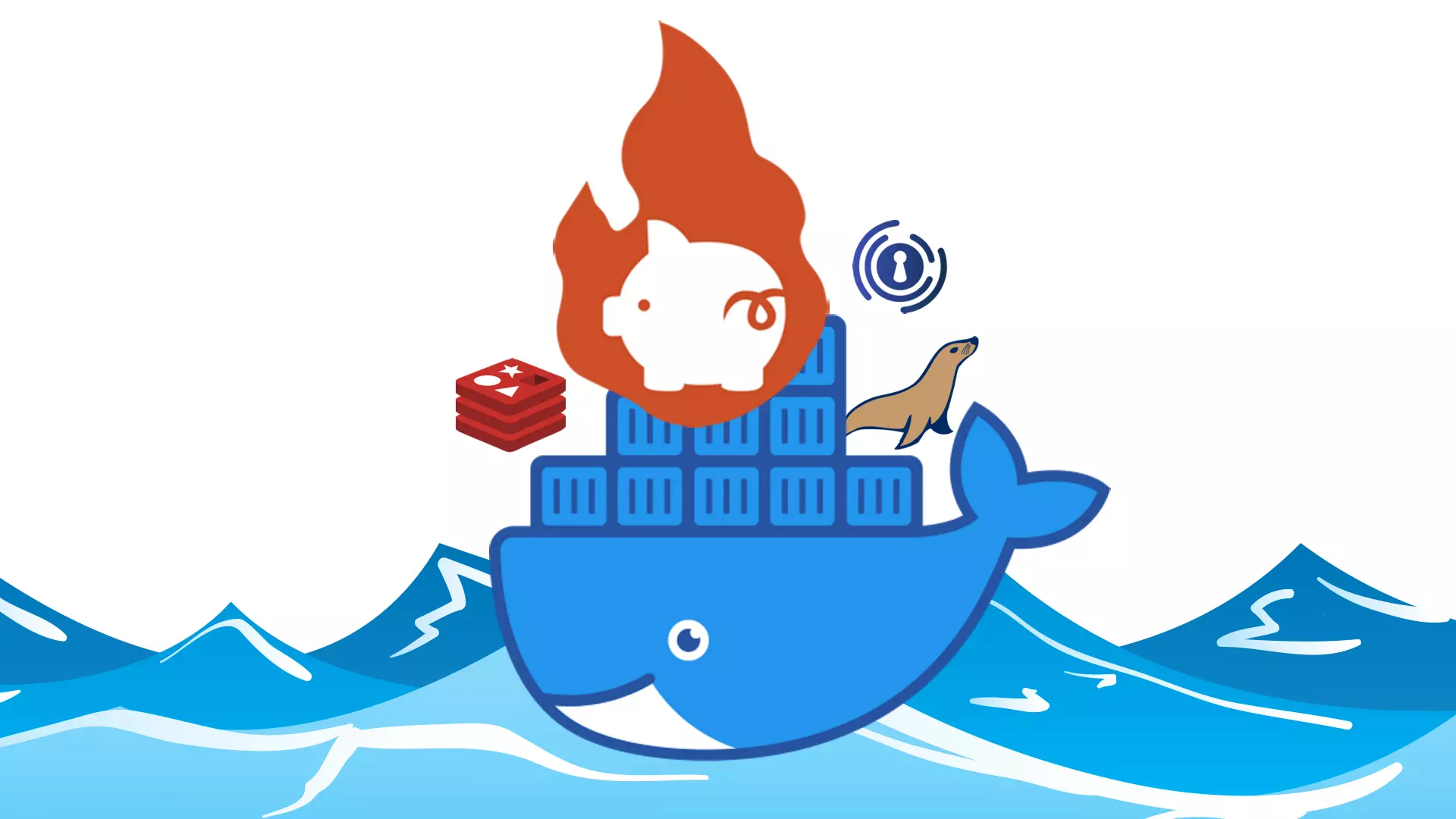Firefly III is a self-hosted personal finance manager.
A comprehensive review of Firefly III is coming soon. However for those who have chosen Firefly III as their choice of personal finance manager, this article describes an opinionated way of systematically deploying it and integrating it into an existing ecosystem.

Pre-requisites
Photo by Dan Cristian Pădureț
Containerized deployment of Firefly III on Docker has the following following pre-requisites.
- Docker
- Database service like MariaDB (MySQL) or PostgreSQL
In addition the following optional dependencies are required.
- NGINX, Apache2, Caddy or another reverse proxy - for accessing the instance from outside the local network
- Authelia - for federated authentication
- Redis - for cache
- Adminer - for browsing the database
- Redis Commander - for browsing the Redis cache
From version 5.7 onwards Firefly III does not have native LDAP integration, however has full support for RFC 3875. This means users can authenticate using the "REMOTE_USER" HTTP header, via an appropriate reverse proxy.
This requires LDAP-compliant authentication mechanism in front of Firefly III.

Pre-Installation
Photo by Tara Winstead

Directories
This guide assumes that local directories/folders on the Docker host will be used to map volumes into the various containers in the app stack. Here's a summary.
- Configuration
- Main app container configuration
- Database container configuration
- Secrets
- Main app secrets files
- Database container secrets files
- Data
- Main app data - storage/uploads
- Cache (Redis) container data - for persistent cache
- Database data
Configuration Folders
Create a configuration space and a protected area for secrets.
Main App Configuration Folder
/usr/local/Ecosystem/etc/FF3App/DirMount/Config
/usr/local/Ecosystem/etc/FF3App/DirMount/Config/private/
Database Configuration Folder
/usr/local/Ecosystem/etc/FF3App/DirMount/DBConfig/
/usr/local/Ecosystem/etc/FF3App/DirMount/DBConfig/private/
Configuration Folder Command
sudo mkdir -p /usr/local/Ecosystem/etc/FF3App/DirMount/{DB,}Config/private/
Secrets Files
Create the following secrets files
Main App
The following secrets file are required for the main app container.
App Key
Location
/usr/local/Ecosystem/etc/FF3App/DirMount/Config/private/APP_KEY
Contents
32-CHARACTER-APP-KEY
Database User
Location
/usr/local/Ecosystem/etc/FF3App/DirMount/Config/private/DB_USERNAME
Contents
DATABASE_USER
Database Password
Location
/usr/local/Ecosystem/etc/FF3App/DirMount/Config/private/DB_PASSWORD
Contents
PASSWORD FOR DATABASE_USER
Database Name
Location
/usr/local/Ecosystem/etc/FF3App/DirMount/Config/private/DB_DATABASE
Contents
DATABASE_NAME
SMTP Password
Location
/usr/local/Ecosystem/etc/FF3App/DirMount/Config/private/MAIL_PASSWORD
Contents
SMTP PASSWORD
Database
The following secrets files are required for the database container.
Database Root Password
Location
/usr/local/Ecosystem/etc/FF3App/DirMount/DBConfig/private/MARIADB_ROOT_PASSWORD
Contents
DATABASE ROOT PASSWORD
Database User
Location
/usr/local/Ecosystem/etc/FF3App/DirMount/DBConfig/private/MARIADB_USER
Contents
DATABASE_USER
Database Password
Location
/usr/local/Ecosystem/etc/FF3App/DirMount/DBConfig/private/MARIADB_PASSWORD
Contents
PASSWORD FOR DATABASE_USER
Database Name
Location
/usr/local/Ecosystem/etc/FF3App/DirMount/DBConfig/private/MARIADB_DATABASE
DATABASE_NAME
Data Directories
The data directories enhance the persistence of otherwise ephemeral containers. These host directories are mapped as volumes inside the container so that the data is retained even when the containers are stopped, updated, replaced or destroyed. This makes the upgrade process very smooth and seamles for the end user.
Main App
The Firefly III Docker container maps a volume to the following location inside the container for user uploads (like receipts)
/var/www/html/storage/upload
Create a directory on the host
/var/local/Apps/FF3App/DirMount/Upload
Persistent Cache
The cache container (Redis) optionally provides the option to make the cache persistent across container restarts & ugprades. It stores this inside the container in the following location:
/data
Create a directory on the host
/var/local/Apps/FF3App/DirMount/CacheData
Database Data
The database (MariaDB) stores all of data (databases, tables, metadata, user data, etc.) in the following location inside the container.
/var/lib/mysql
Create a directory on the host
/var/local/Apps/FF3App/DirMount/DBData
The MariaDB container allows initialization of an empty database with a previously downloaded database (more info here) from the following location inside the container.
/docker-entrypoint-initdb.dIn such a case create the following directory on the Docker host.
/var/local/Apps/FF3App/DirMount/InitDBPermissions
Ensure that the secrets files have the appropriate permissions
sudo chmod o= /usr/local/Ecosystem/etc/FF3App/DirMount/Config/private/*
sudo chmod o= /usr/local/Ecosystem/etc/FF3App/DirMount/DBConfig/private/*

Installation
Photo by Rodolfo Quirós

Container Stack Deployment
Photo Kaboompics.com
This guide assumes that the optional components identified in Pre-requisites will be deployed.
Install using Docker [1] [2] [3] [4] [5].
Create the Docker Compose file in the following location
/usr/local/Ecosystem/etc/FF3App/docker-compose.yaml
Define the application stack in the Docker Compose file. This guide utilizes the expanded syntax. This is especially useful for homelabs & enthusiasts who may not be spending most of their time maintaining their self-hosted applications. The verbosity helps self-document the application stack & should not be underestimated.
#version: '3' # Version property is deprecated in the latest version of the Docker Compose schema.
name: "ff3app_stack"
services:
main:
container_name: "FF3App_Main"
restart: "unless-stopped"
depends_on:
- "cache"
- "db"
deploy:
resources:
limits:
cpus: "0.5"
memory: "256m"
networks:
net_app:
ipv4_address: "172.24.6.2"
hostname: "ff3app"
extra_hosts:
- "docker.host:172.24.6.1"
# ports:
# - target: 8096
# host_ip: "0.0.0.0"
# published: 38096
# protocol: "tcp"
# mode: "host"
volumes:
- type: "bind"
source: "/usr/local/Ecosystem/etc/FF3App/DirMount/Config"
target: "/etc/FF3App"
read_only: true
- type: "bind"
source: "/var/local/Apps/FF3App/DirMount/Upload"
target: "/var/www/html/storage/upload"
read_only: false
environment:
TRUSTED_PROXIES: "**"
APP_DEBUG: "false"
APP_LOG_LEVEL: "notice"
LOG_CHANNEL: "stack"
AUDIT_LOG_LEVEL: "info"
DEFAULT_LANGUAGE: "en_GB"
TZ: "Europe/London"
APP_KEY_FILE: "/etc/FF3App/private/appkey"
APP_NAME: "FF3App"
APP_ENV: "local"
APP_URL: "https://ff3app.ecosystem.tld"
SITE_OWNER: "admin@ecosystem.tld"
DB_CONNECTION: "mysql"
DB_HOST: "ff3app-db"
DB_PORT: "3306"
DB_USERNAME_FILE: "/etc/FF3App/private/dbuser"
DB_PASSWORD_FILE: "/etc/FF3App/private/dbpw"
DB_DATABASE_FILE: "/etc/FF3App/private/db"
CACHE_DRIVER: "redis"
SESSION_DRIVER: "redis"
REDIS_SCHEME: "tcp"
REDIS_HOST: "ff3app-cache"
REDIS_PORT: "6379"
REDIS_DB: "10"
REDIS_CACHE_DB: "11"
AUTHENTICATION_GUARD: "remote_user_guard"
AUTHENTICATION_GUARD_HEADER: "HTTP_REMOTE_USER"
AUTHENTICATION_GUARD_EMAIL: "HTTP_REMOTE_EMAIL"
CUSTOM_LOGOUT_URL: "https://auth.ecosystem.tld/logout/?rd=https%3A%2F%2Fff3app.ecosystem.tld"
MAIL_MAILER: "smtp"
MAIL_HOST: "smtp.mail.tld"
MAIL_PORT: "587"
MAIL_ENCRYPTION: "tls"
MAIL_USERNAME: "admin@ecosystem.tld"
MAIL_PASSWORD_FILE: "/etc/FF3App/private/smtppw"
MAIL_FROM: "admin@ecosystem.tld"
SEND_REGISTRATION_MAIL: "true"
SEND_ERROR_MESSAGE: "true"
SEND_LOGIN_NEW_IP_WARNING: "true"
labels:
info.ecosystem.provider.name: "Firefly III"
info.ecosystem.provider.variant: "N.A."
info.ecosystem.provider.version: "6.0.11"
info.ecosystem.service.name: "FF3App"
image: "docker.io/fireflyiii/core:version-6.0.11"
cache:
container_name: "FF3App_Cache"
restart: "unless-stopped"
deploy:
resources:
limits:
cpus: "1"
memory: "512m"
healthcheck:
test: "/usr/local/bin/redis-cli ping"
interval: "60s"
timeout: "10s"
start_period: "20s"
retries: 3
networks:
net_app:
ipv4_address: "172.24.6.4"
hostname: "ff3app-cache"
extra_hosts:
- "docker.host:172.24.6.1"
- "ff3app:172.24.6.2"
- "ff3app-db:172.24.6.6"
- "ff3app-db-explorer:172.24.6.8"
- "ff3app-cache-explorer:172.24.6.10"
volumes:
- type: "bind"
source: "/var/local/Apps/FF3App/DirMount/CacheData"
target: "/data"
read_only: false
labels:
info.ecosystem.provider.name: "Redis"
info.ecosystem.provider.variant: "Bullseye"
info.ecosystem.provider.version: "7.0.11"
info.ecosystem.service.name: "FF3App"
image: "docker.io/library/redis:7.0.11-bullseye"
db:
container_name: "FF3App_DB"
restart: "unless-stopped"
deploy:
resources:
limits:
cpus: "0.5"
memory: "512m"
healthcheck:
test: "/usr/local/bin/healthcheck.sh --connect"
interval: "60s"
timeout: "10s"
start_period: "20s"
retries: 3
networks:
net_app:
ipv4_address: "172.24.6.6"
hostname: "ff3app-db"
extra_hosts:
- "docker.host:172.24.6.1"
- "ff3app:172.24.6.2"
- "ff3app-cache:172.24.6.4"
- "ff3app-db-explorer:172.24.6.8"
- "ff3app-cache-explorer:172.24.6.10"
# ports:
# - target: 3306
# host_ip: "0.0.0.0"
# published: 3306
# protocol: "tcp"
# mode: "host"
volumes:
- type: "bind"
source: "/usr/local/Ecosystem/etc/FF3App/DirMount/DBConfig"
target: "/etc/FF3AppDB"
read_only: false
- type: "bind"
source: "/var/local/Apps/FF3App/DirMount/DBData"
target: "/var/lib/mysql"
read_only: false
# - type: "bind"
# source: "/var/local/Apps/FF3App/DirMount/InitDB"
# target: "/docker-entrypoint-initdb.d"
# read_only: true
environment:
MARIADB_ROOT_PASSWORD_FILE: "/etc/FF3AppDB/private/dbrootpw"
MARIADB_USER_FILE: "/etc/FF3AppDB/private/dbuser"
MARIADB_PASSWORD_FILE: "/etc/FF3AppDB/private/dbpw"
MARIADB_DATABASE_FILE: "/etc/FF3AppDB/private/db"
labels:
info.ecosystem.provider.name: "MariaDB"
info.ecosystem.provider.variant: "Jammy"
info.ecosystem.provider.version: "10.11.3"
info.ecosystem.service.name: "FF3App"
image: "docker.io/library/mariadb:10.11.3-jammy"
db-explorer:
container_name: "FF3App_DB-Explorer"
restart: "unless-stopped"
depends_on:
- "db"
deploy:
resources:
limits:
cpus: "0.5"
memory: "128m"
networks:
net_app:
ipv4_address: "172.24.6.8"
hostname: "ff3app-db-explorer"
extra_hosts:
- "docker.host:172.24.6.1"
- "ff3app:172.24.6.2"
- "ff3app-cache:172.24.6.4"
- "ff3app-db:172.24.6.6"
- "ff3app-cache-explorer:172.24.6.10"
# ports:
# - target: 8080
# host_ip: "0.0.0.0"
# published: 8080
# protocol: "tcp"
# mode: "host"
environment:
TZ: 'Europe/London'
ADMINER_DEFAULT_SERVER: "ff3app-db"
labels:
info.ecosystem.provider.name: "Adminer"
info.ecosystem.provider.variant: "Standalone"
info.ecosystem.provider.version: "4.8.1"
info.ecosystem.service.name: "FF3App"
image: "docker.io/library/adminer:4.8.1-standalone"
cache-explorer:
container_name: "FF3App_Cache-Explorer"
restart: "unless-stopped"
deploy:
resources:
limits:
cpus: "0.25"
memory: "128m"
healthcheck:
test: "/usr/bin/wget --no-verbose --quiet --tries=1 --spider http://localhost:8081 || exit 1"
interval: "60s"
timeout: "10s"
start_period: "20s"
retries: 3
networks:
net_app:
ipv4_address: "172.24.6.10"
hostname: "ff3app-cache-explorer"
extra_hosts:
- "docker.host:172.24.6.1"
- "ff3app:172.24.6.2"
- "ff3app-cache:172.24.6.4"
- "ff3app-db:172.24.6.6"
- "ff3app-db-explorer:172.24.6.8"
environment:
TZ: 'Europe/London'
REDIS_HOSTS: "FF3App-Cache:ff3app-cache"
labels:
info.ecosystem.provider.name: "Redis Commander"
info.ecosystem.provider.variant: "N.A."
info.ecosystem.provider.version: "0.8.1"
info.ecosystem.service.name: "FF3App"
image: "ghcr.io/joeferner/redis-commander:0.8.1"
networks:
net_app:
name: "FF3App_net"
driver: "bridge"
ipam:
driver: "default"
config:
- subnet: "172.24.6.0/24"
Change the following as per the installation:
APP_DEBUGAPP_LOG_LEVELAPP_KEYAPP_ENVDB_PASSWORDLDAP_PASSWORDMAIL_PASSWORD- Docker image tag.
- Container labels to match the release version.

Configuration & Setup
Photo by Kishan Rahul Jose
Most of the configuration of the application stack is taken care of in the container environment variables in the stack definitions.
Additional configuration is required for associated applications and environment. This is described below.

Authentication Configuration
This guide assumes that a working & updated instance of Authelia is available. The following guidance focusses on elements of the Authelia configuration that are relevant to the Firefly III app stack being deployed.
Authentication Headers
To ensure that Authelia injects the correct authentication headers in every HTTP request it proxies through to the app, the following code block must be present to ensure that the name of the headers matches what Firefly III expects.
File: /etc/nginx/conf.d/auth-request.auth.authelia (... indicates continuation to & from other existing code in the file)
...
proxy_set_header Remote-User $user;
proxy_set_header Remote-Groups $groups;
proxy_set_header Remote-Name $name;
proxy_set_header Remote-Email $email;
...... indicates continuation to & from other existing code in the file

Reverse Proxy
Accessing the app
Photo by Martin Cheung
This assumes that NGINX will be used as the reverse proxy to access the app. Create a virtual host configuration file in the NGINX area for host configuration files. Typically this is at /etc/nginx/sites-available/. For your installation of NGINX, for your your reverse proxy, this might be different.
server {
server_name ff3app.ecosystem.tld;
error_log /var/log/nginx/FF3App_error.log debug;
access_log /var/log/nginx/FF3App_access.log combined;
server_tokens off;
client_max_body_size 512M; # Influences maximum file size for uploads.
# Error pages
include /etc/nginx/conf.d/errorblock;
listen 80;
if ($scheme = http) {
# Force redirection to HTTPS.
return 301 https://$host:443$request_uri;
}
listen 443 ssl;
ssl_certificate /etc/ssl/certs/FF3App.crt.pem;
ssl_certificate_key /etc/ssl/private/FF3App.privkey.pkcs8.pem;
include /etc/nginx/conf.d/auth-endpoint.auth.authelia;
location / {
# Reverse proxy configuration
include /etc/nginx/conf.d/proxy.auth.authelia;
# Activate Authelia for specified route/location, please ensure you have setup the domain in your configuration.yml
include /etc/nginx/conf.d/auth-request.auth.authelia;
# Pass to Docker container on its own isolated network
proxy_pass http://172.24.6.2:8080;
}
}
1.
/etc/nginx/conf.d/auth-endpoint.auth.authelia is included at the root of the virtual host.2.
/etc/nginx/conf.d/proxy.auth.authelia is included in the location block of the virtual host.3.
/etc/nginx/conf.d/auth-request.auth.authelia is included in the location block of the virtual host.
Automations
Leveraging FF3's full functionaliy
Photo by Pavel Danilyuk
Firefly III comes with built-in functionality for recurring transactions, rules and regular budget allocation.
Since it is a PHP application, external automation is required for running these operations.
Execute the command by accessing the container from the Docker host [1].
Add a daily cron job using curl
/etc/cron.d/daily/Apps
/usr/bin/docker exec --user www-data FF3App_Main /usr/local/bin/php /var/www/html/artisan firefly-iii:cron

Backup & Restore
Managing disaster risk
Photo by Алекс Арцибашев on Unsplash
Irrespective of any underlying backup strategies, an application level backup plan is essential for atomically mitigating any disaster risk without disrupting the wider ecosystem utilizing the underlying system(s).
The following aspects of the application shoudl be considered for backing up.
- Database
- Configuration
- Uploads & other file data
Database
The database is the single most important aspect of all persistence information across the entire application stack.
The approach used in this article is to save the database data in a location on the Docker host as a bind mount into the database container.
1. Filesystem
The filesystem location of the database data on the Docker host can be backed up using several methods like archiving/compression, backup tools (e.g., borg & restic) or filesystem snapshots (e.g., ZFS or BTRFS).
As per the guidance in this article, this is located in...
/var/local/Apps/FF3App/DirMount/DBData
Alternatively the default location of volumes within the Docker directory hierarchy may be used.
2. SQL Data Export
Ultimately, it is the data within the database that is of real importance. So a traditional SQL export of the database can be performed using either the CLI, a database client or the Adminer container designed into the stack.
In this example a command line approach is used, which can then be scheduled as a cron job.
Create the following backup script.
#!/bin/sh
/usr/bin/mysqldump --defaults-extra-file=/path/to/.my.cnf --host=localhost --user=dbadmin --opt --verbose DATABASE_NAME | /bin/bzip2 -9 > /path/to/backups/Ecosystem/Service/FF3App/Backup/DB/DATABASE_NAME_`date +"%Y-%m-%d-%H-%M-%S"`_MariaDB_FF3App-Ecosystem.sql.bz2
This may require logging into the database container first:
docker exec -it FF3App_DB bash
Configuration
The configuration files for all containers in this guide have been located in a single location
/usr/local/Ecosystem/etc/FF3App/
This also includes the docker-compose.yml file, which is a crucial file for future rebuilding of the application stack (as long as the various pieces of the data are available)
App Data
Finally the following data must also be backed by whatever means are available.
Firefly III Uploads
/var/www/html/storage/upload

Other Tasks
Maintaining & supporting
Photo by Yosafat Herdian on Unsplash
There is a variety of operations for maintaing and supporting an instance of Firefly III. This section will cover some common scenarios encountered by the typical self-hoster.
Exporting Transactions
Firefly III API supports exporting data via the command line [1]
Enter the container’s command line.
docker exec -it FF3App_Main bash
Export Transactions For Specific Account(s)
Get the token string for the user whose account data needs to be accessed.
Get the Firefly III internal index of the account to be exported. This can be achieved by navigating to the account on the web UI. It is typically one of the slugs in the URL string. The example below uses the account index 58.
Once logged into the container's CLI, run the following command to export transactions for a specific account.
php artisan firefly-iii:export-data --export-transactions --accounts=58 --token=USER-TOKEN-STRING
Update 1 • 9-Aug-2025
Fixed minor typographical errors.
Update 2 • 20-Aug-2025
- Consistent visual formatting of info boxes & call-outs.

